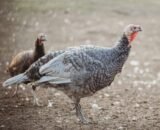- You have no items in your shopping cart
- Subtotal: $0.00
standard bronze turkey
$45.00
Minimum Order Quantity 2
Category: Domestic Turkeys
Tags: american standard bronze turkey, are the standard bronze turkey marked different than the bbb turkey, are the standard bronze turkey marked different than the bronze turkey, are the standard bronze turkey marked difrant than the bronze turkey, bronze heritage standard turkey, bronze heritage standard turkey chick, bronze heritage standard turkey for sale, cackle standard bronze turkey, can standard bronze turkeys fly, heritage (standard) bronze turkey breed, heritage standard bronze turkey, heritage turkey standard bronze broody, how do you know if you bronze turkey is standard or the short legged, how do you know if your bronze turkey is standard or the short legged, how long do standard bronze turkeys take to be full grown, how long does it take for standard bronze turkeys to mature, how many eggs do standard bronze turkeys lay, is the standard bronze turkey, is the standard bronze turkey meat taste good, mix between standard bronze and blue slate turkey, mix between standard bronze and bourbon red turkey, standard bronze heritage turkey, standard bronze heritage turkey poults for sale, standard bronze tom turkey, standard bronze turkey, standard bronze turkey breast size, standard bronze turkey broody, standard bronze turkey characteristics, standard bronze turkey chick, standard bronze turkey chicks, standard bronze turkey color of wild, standard bronze turkey eggs, standard bronze turkey for sale, standard bronze turkey hatchery, standard bronze turkey hen, standard bronze turkey in arizona, standard bronze turkey lifespan, standard bronze turkey male, standard bronze turkey poults, standard bronze turkey size, standard bronze turkey taste, standard bronze turkey vs bourbon red, standard bronze turkey weight, standard bronze turkey weight at 6 months, standard bronze turkeys, standard bronze turkeys for sale, standard bronze turkeys for sale near me, standard bronze turkeys heritage?, standard bronze turkeys poults for sale, standard bronze turkeys single breast, standard bronze turkeys vs narragansett, standard heritage bronze turkey, temperature tolerance of standard bronze turkey, what do a standard bronze turkey look like, when to butcher standard bronze turkeys, where to buy standard bronze turkey poults, wild turkey vs standard bronze








Customer reviews
Reviews
There are no reviews yet.
Write a customer review